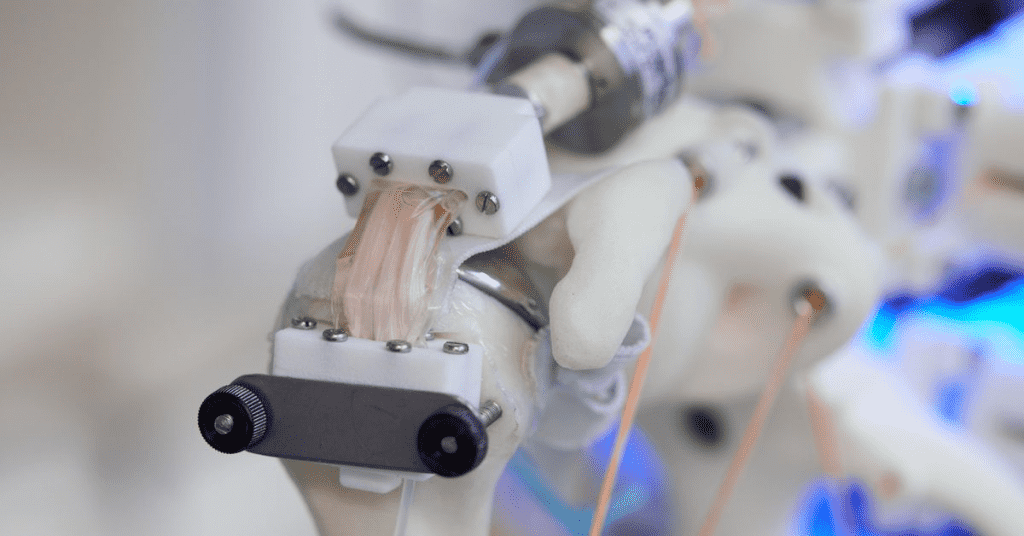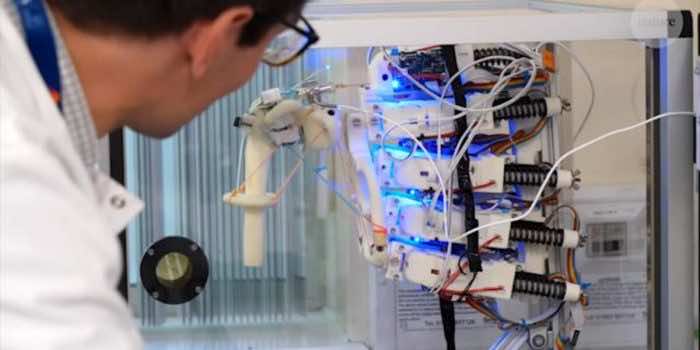In a new scientific experiment, scientists have grown human cells on a moving robotic skeleton in an attempt to ameliorate the peculiarities of the conception of tissue engineering. This is the first time the cells have grown instead of a static environment, and they can now naturally be flexed and stretched. In the past, brain cells were implanted in a petri dish for their growth, which is a completely static process, but this time, researchers have made sure to give these cells natural surroundings for their improvised growth.

They could also experiment the same process on a human being, but due to the risk factors, they have decided to go with the robotic skeleton, which possesses movements like a normal human being. The idea of growing the cells in a flexible environment is to test and approve the task to be used in certain medical scenarios where elasticity is an important factor. Hence, this research would open a door to new possibilities in the field of tissue engineering.
The mechanism deployed here is that scientists first assembled a “robotic shoulder joint” similar to the human arm, which performs maneuvers similar to those of a human being. These movements also fulfill the criteria for the growth of cells in a dynamic environment. Next, what they did was fit a bioreactor that consisted of a thread-like filament that is biodegradable. They have infused human cells into this filament that becomes expanded into the shoulder joints.
In the meantime, scientists devised a proper workout routine for the robot to give cells a constant flexible environment. The robot had to stretch and flex itself, especially its shoulders, for 30 minutes. Following this, the cells grew after two weeks, but scientists have observed some changes and conversions in these grown cells in comparison with the cells grown in a static environment.
However, they still have some doubts regarding the efficiency of this process and whether the changes are good enough to start deploying them in medical applications. The lead researcher on the project, Pierre-Alexis Mouthuy, said, “We do get differences out of the loading regime, but whether those differences mean better cells? We don’t know yet. We’re not saying this system is better than the others. Or there’s a particular motion that is better than the others. We’re just showing feasibility.”



